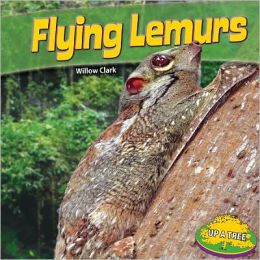The money added up and soon she had a total of $1,160 dollars.
With those funds she purchased 60 non-fiction animal books for the library
shelves. To commemorate their arrival, Ms. Brown and children from three second
grade classes gathered in front of our school for a photograph. Each child is holding up one of the 60 brand
new library books.
The students aren’t the only ones who benefited from Ms.
Brown’s labors; I snagged one of the new books to use with a language group
this week: Flying Lemurs by Willow
Clark.

My speech kids were divided as to whether the animal was really
cute or really ugly, but they all agreed the flying lemur, or “colugo,” was fascinating.
To begin with, though they are called flying lemurs, they don’t fly (they
glide) and they are not actually lemurs.
“They are called lemurs because
their faces look like lemurs’ faces.”
This shy, large-squirrel-sized mammal rarely leaves the trees
in the rainforest where they live. They simply glide through the air, moving
from tree to tree. Their camouflaging fur looks similar to the lichen growing
on trees in their habitat, but still, they have to keep an eye out for
predators such as Philippine eagles. When I read the page about predators to a
group of girls, they gasped in unison and Esmeralda pulled the book close, as
if to protect the vulnerable colugo.
This book is peppered with new vocabulary words, all in bold
print.
“Both kinds of flying lemurs
are arboreal, meaning they live in
trees. Just about everything they need is found in the treetops of the tropical rain forest habitats in which they live. Flying
lemurs are nocturnal. This means
they are active mostly at night.”
If a child misses the meaning of a word within the text, or
simply wants to review a new vocabulary word, there is a handy glossary in the
back of the book.
Our students are lucky to have a growing library. They
eagerly file in each week to choose a special book to carry home. Some choose
nonfiction, like Flying Lemurs, and
these kids journey through the pages to places in the world they are unlikely
to visit in person – or perhaps they will. Perhaps the book will ignite a dream
and one day they’ll travel to new regions and new personal horizons. These
children may become our future biologists, anthropologists or teachers.
Some
kids gravitate toward fiction and when they find a good story they often find a
character who will become a companion, housed in their imagination for years to
come. They may also experience the first stirrings of a desire to create
characters and stories of their own. I’ve seen it repeatedly in my speech room.
After listening to a good story, the kids often beg to write one of their own.
I’m grateful to Allison Brown who funded and selected the 60
new books now on our shelves. She continually finds creative ways to expand our
library and introduce our students to great books. I’m also grateful to
librarians, writers, parents, and teachers everywhere who instill a love of
books in today’s children. We will all reap the benefits.


I like that the book has a glossary..It always makes for a quick review kind of "hooks" to remember what we have read about.
ReplyDeleteThanks for the lovely post.
-Reshama
www.stakcingbooks.com